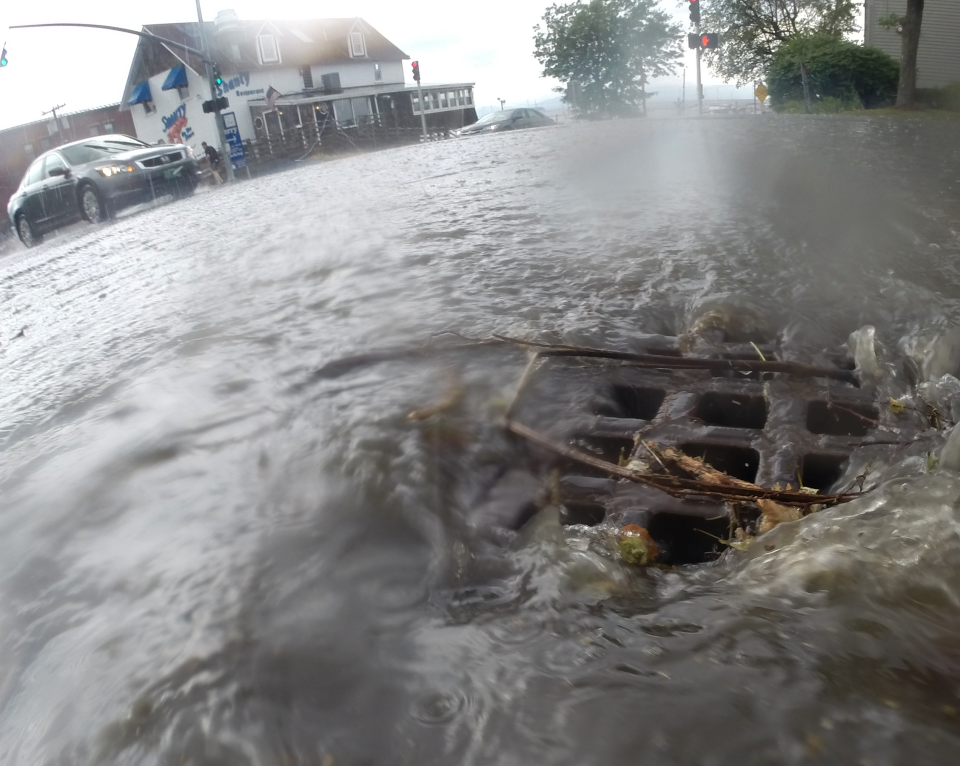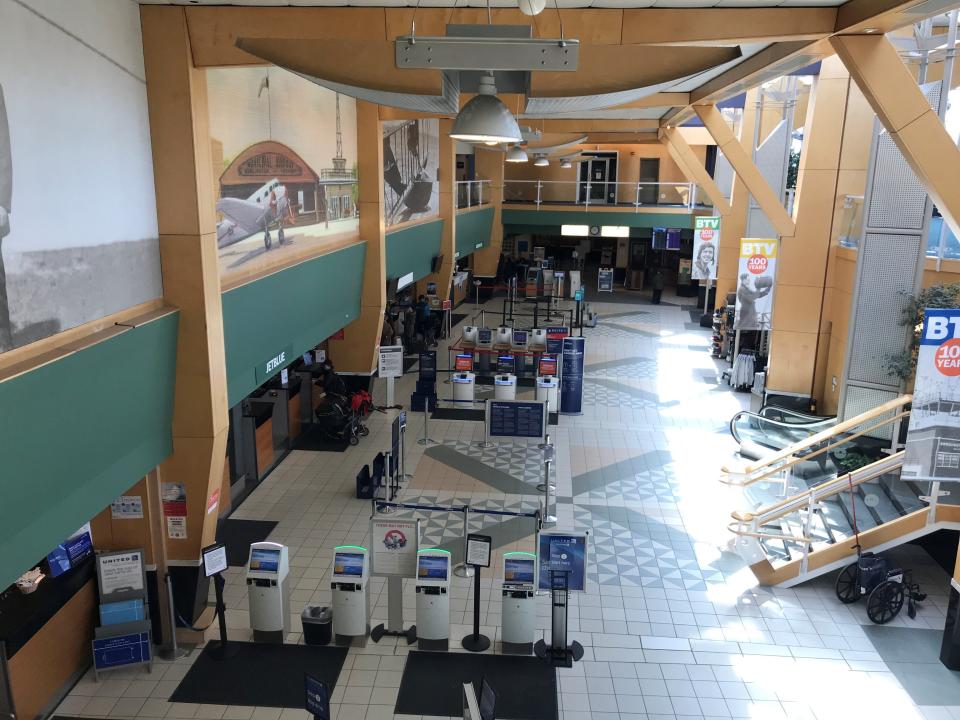Infrastructure report card reveals a few red flags in Chittenden County
The American Society of Civil Engineers recently completed its periodic assessment of Vermont's airports, bridges, dams, and more in what it dubs the "2023 Report Card for Vermont's Infrastructure."
The best we did was a B-minus for our bridges; the worst, a D-plus for our wastewater treatment systems. Our overall GPA was a C, the same as our last report card in 2019.

"Progress is real, but challenges remain," the report states in its executive summary. "Substantial maintenance backlogs have accrued in several areas as recent investment runs into new challenges such as inflation, shortage of a trained workforce, and a deficit of resiliency to withstand climate change."
Here are a few of the red flags the engineers raised in Chittenden County:
Indian Brook Reservoir Dam, Essex
Vermont has 1,115 dams used for recreation, flood control and hydropower; 6% of those dams are high hazard, meaning if they fail, people will probably die, according to the report card.
Jessica Louisos, the report card chair and a dam removal specialist, explained that a high hazard rating for a dam has nothing to do with the condition of the dam, and everything to do with what's downstream.
"They're considered high hazard because of their risk potential," Louisos said.
When you combine a high hazard dam with a dam that is also in poor condition, you have a problem, and Vermont has nine such dams, one of them in Essex − the Indian Brook Reservoir Dam. The report card defines poor condition as "below standard, with many elements approaching the end of their service life." Infrastructure in poor condition carries a "strong risk of failure."
Ben Green, dam safety engineer with the Vermont Department of Environmental Conservation, said the population at risk from a failure of the Indian Brook Reservoir Dam is 27 people.
Most of the high hazard dams in poor condition are undergoing risk assessments using FEMA funding, which should be done later this year. Then the dams will ranked by risk, making them eligible for additional engineering and repair funding from FEMA.
"The study will also help (us) understand the potential range of costs of needed safety upgrades," Green said in an email.
Bridge #29 in Richmond
Vermont achieves its highest grade for bridges, with the number of bridges in poor condition dropping to 2.4% of the inventory, down from 5% in 2017, and well below the national average of 7.5%, as of 2021.
That said, the average age of Vermont's bridges is 59 years, compared to 44 years nationally. Vermont's report card states that despite the progress made with bridges, the older average age of our bridges means they will require "greater attention in the coming years."
"Increased funding for replacements, development of efficient designs, and innovative construction methods will be needed to improve the condition of these structures," the report card says.
One of the bridges in poor condition is in Chittenden County, according to Spencer Howard, bridge management and inspection program manager for the Vermont Agency of Transportation. It's Bridge #29 over I-89 in Richmond on U.S. 2. The project is out to bid, Howard said in an email, with construction expected to begin this summer on a replacement project.
"Overall bridges in Chittenden County are safe," Howard said. "If not we would post them, restrict them, or close them."
Burlington International Airport, South Burlington
The report card points out that Burlington International Airport got a reprieve from its "terminal capacity challenges" in 2020 during the pandemic, when there was a 69% drop in passengers served and a 33% drop of scheduled flights.

The airport broke ground in October 2021 on a 37,000-square-foot expansion to the terminal that added five TSA screening lanes, expanded room for lines and space for concessions. The $14.5 million project was 90% funded through an FAA Airport Improvement Program Grant, and opened a year later.
Still, the report card warns of trouble ahead, projecting a "funding gap" of $53 million for the years 2023-2027 for not just BTV but all of Vermont's airports, for repairing and reconstructing existing infrastructure.
"BTV's estimated investment need in those years is $73 million, plus $66 million for the other state airports − compared to a projected $61 million and $25 million funding availability, respectively," the report card states.
Contact Dan D’Ambrosio at 660-1841 or ddambrosio@freepressmedia.com. Follow him on Twitter @DanDambrosioVT. This coverage is only possible with support from our readers.
This article originally appeared on Burlington Free Press: Vermont infrastructure report card reveals room for improvement

